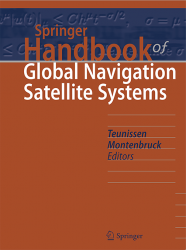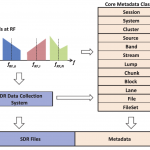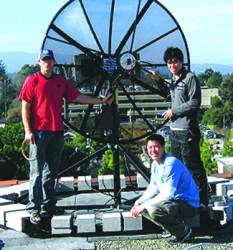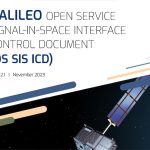
Springer has published the “Springer Handbook of Global Navigation Satellite Systems”, edited by Peter J.G. Teunissen (Professor of Geodesy and Satellite Navigation at Curtin University and TU Delft) and Oliver Montenbruck (Head of the GNSS Technology and Navigation Group at DLR’s German Space Operations Center).
Springer has published the “Springer Handbook of Global Navigation Satellite Systems”, edited by Peter J.G. Teunissen (Professor of Geodesy and Satellite Navigation at Curtin University and TU Delft) and Oliver Montenbruck (Head of the GNSS Technology and Navigation Group at DLR’s German Space Operations Center).
The book presents a complete and rigorous overview of the fundamentals, methods and applications of the multidisciplinary field of GNSS, providing an exhaustive, one-stop reference work and a state-of-the-art description of GNSS as a key technology for science and society at large.
All global and regional satellite navigation systems, both those currently in operation and those under development (GPS, GLONASS, Galileo, BeiDou, QZSS, IRNSS/NAVIC, SBAS), are examined in detail. The functional principles of receivers and antennas, as well as the advanced algorithms and models for GNSS parameter estimation, are rigorously discussed. The handbook covers the broad and diverse range of land, marine, air and space applications, from everyday GNSS to high-precision scientific applications and provides detailed descriptions of the most widely used GNSS format standards, covering receiver formats as well as IGS product and meta-data formats.
The full coverage of the field of GNSS is presented in seven parts, from its fundamentals, through the treatment of global and regional navigation satellite systems, of receivers and antennas, and of algorithms and models, up to the broad and diverse range of applications in the areas of positioning and navigation, surveying, geodesy and geodynamics, and remote sensing and timing.
Each chapter is written by international experts and amply illustrated with figures and photographs, making the book an invaluable resource for scientists, engineers, students and institutions alike, according to the publisher. “No doubt, this handbook will become in a short time the reference manual in satellite navigation – it contains all facets of this high-tech field. Editors and the many authors have put together an exhaustive book – hard to find something missing,” says Günter W. Hein, former head of ESA’s EGNOS and Galileo Evolution Department and Scientific Consultant of ESA.
The book, which is available in print and a variety of electronic formats, can be ordered through this website: http://www.springer.com/book/9783319429267





